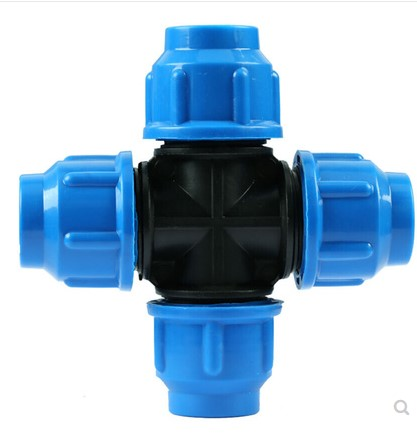Dec . 10, 2024 19:34 Back to list
Connection Solutions for HDPE and PVC Pipes and Fittings
Understanding HDPE to PVC Connection Products
In the realm of piping and plumbing, the need for effective and reliable connections between different materials is crucial. Two of the most widely used polymers in the industry are High-Density Polyethylene (HDPE) and Polyvinyl Chloride (PVC). Each material has its unique properties and advantages, making them suitable for different applications. However, in many instances, systems that utilize both materials can benefit from appropriate connection products that facilitate the joining of HDPE to PVC. This article delves into the characteristics of these materials, their compatibility, and the various connection products available for this purpose.
Properties of HDPE and PVC
HDPE is known for its high tensile strength, low weight, and excellent resistance to impact and corrosion. It is non-toxic, making it an ideal choice for applications involving potable water and food storage. HDPE is also flexible, allowing it to withstand settling and ground movements. This flexibility, coupled with its durability, makes it a popular choice for piping systems that require resilience.
On the other hand, PVC is widely used due to its rigidity and strength. It is resistant to chemical attacks and has excellent insulating properties. PVC piping is common in drainage, waste, and vent systems. However, it is less flexible than HDPE, making it more susceptible to cracking under stress or movement. Despite these differences, both materials can complement each other remarkably well in various applications.
The Need for Connection Products
In construction and plumbing projects, the integration of HDPE and PVC is often necessary. For example, HDPE might be used for underground piping due to its flexibility and strength, while PVC might be utilized above ground for its structural integrity and ease of installation. However, transitioning from HDPE to PVC poses challenges, primarily related to the distinct properties of each material.
To facilitate this transition, manufacturers produce a variety of connection products designed specifically for HDPE to PVC conversions. These products help to ensure a leak-free and secure connection, which is essential to maintain the integrity of the plumbing system.
Types of Connection Products
1. Transition Fittings Transition fittings are specifically designed to connect HDPE and PVC pipes. These fittings may include transitions such as pipe couplings, tees, and elbows, usually equipped with a threaded end for easy connection to PVC and a fusion or saddle for HDPE. The dual functionality of these fittings enables contractors to create seamless transitions between the two materials.
hdpe to pvc connection products

2. Flange Adapters Flange adapters allow for an easy connection between HDPE and PVC systems. The HDPE side usually features a socket or butt fusion connection, while the PVC side has a standard flange. This arrangement is beneficial when connecting to flanged fittings in existing PVC systems.
3. Mechanical Couplings Mechanical couplings are another effective solution for joining HDPE and PVC. They use a rubber gasket or O-ring seal and a clamp system to securely connect the different pipe materials. These couplings can be beneficial in environments where thermal expansion or ground movement is a concern.
4. Specialized Adhesives In some cases, specialized adhesives or sealants may be used to bind connections between HDPE and PVC. These adhesives are formulated to work with the chemical composition of both materials, ensuring a rigid and watertight seal.
Best Practices for Installation
When working with HDPE to PVC connection products, several best practices should be followed to ensure a successful installation
- Surface Preparation Properly clean the surfaces of both pipes before joining them. This ensures better adhesion and reduces the risk of leaks. - Follow Manufacturer Instructions Always adhere to the guidelines provided by the manufacturer for installation. This might include specific torque settings for mechanical fittings or recommended curing times for adhesives.
- Test for Leaks Once installed, it is vital to test the connections for leaks. This can be done using a pressure test or visual inspections.
Conclusion
The versatility of HDPE and PVC makes them staples in various industries, particularly in plumbing and construction. By utilizing specialized connection products, professionals can effectively bridge the gap between these two materials, ensuring seamless and reliable installations. As technology continues to advance, the development of improved connection products will further enhance the efficiency and durability of plumbing systems that utilize these essential materials. As we embrace innovation, we can look forward to creating more resilient and integrated systems for the future.
-
High-Quality PVC Borehole Pipes Durable & Versatile Pipe Solutions
NewsJul.08,2025
-
High-Quality PVC Perforated Pipes for Efficient Drainage Leading Manufacturers & Factories
NewsJul.08,2025
-
High-Quality PVC Borehole Pipes Durable Pipe Solutions by Leading Manufacturer
NewsJul.08,2025
-
High-Quality PVC Borehole Pipes Reliable PVC Pipe Manufacturer Solutions
NewsJul.07,2025
-
High-Quality UPVC Drain Pipes Durable HDPE & Drain Pipe Solutions
NewsJul.07,2025
-
High-Quality Conduit Pipes & HDPE Conduit Fittings Manufacturer Reliable Factory Supply
NewsJul.06,2025

